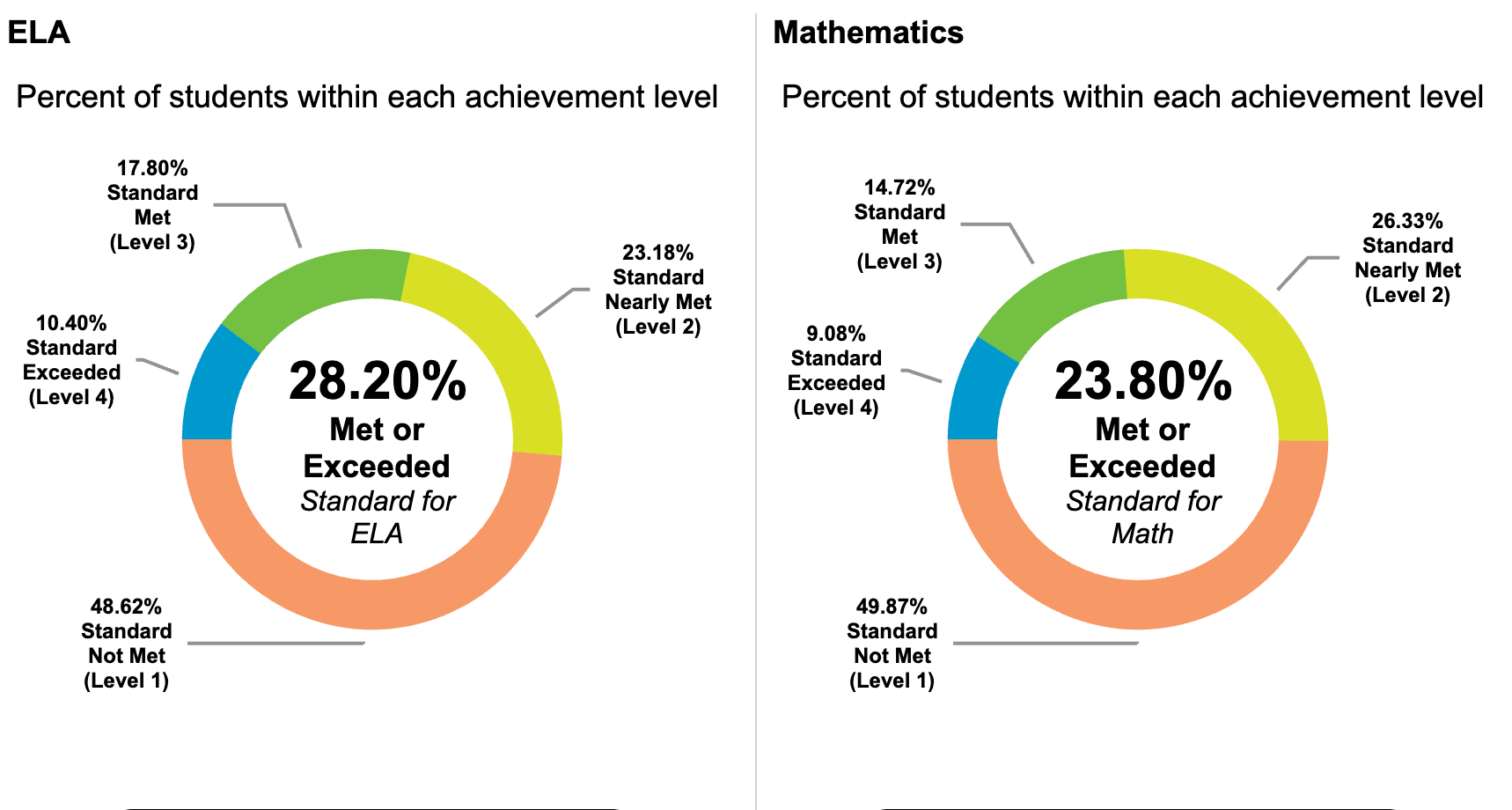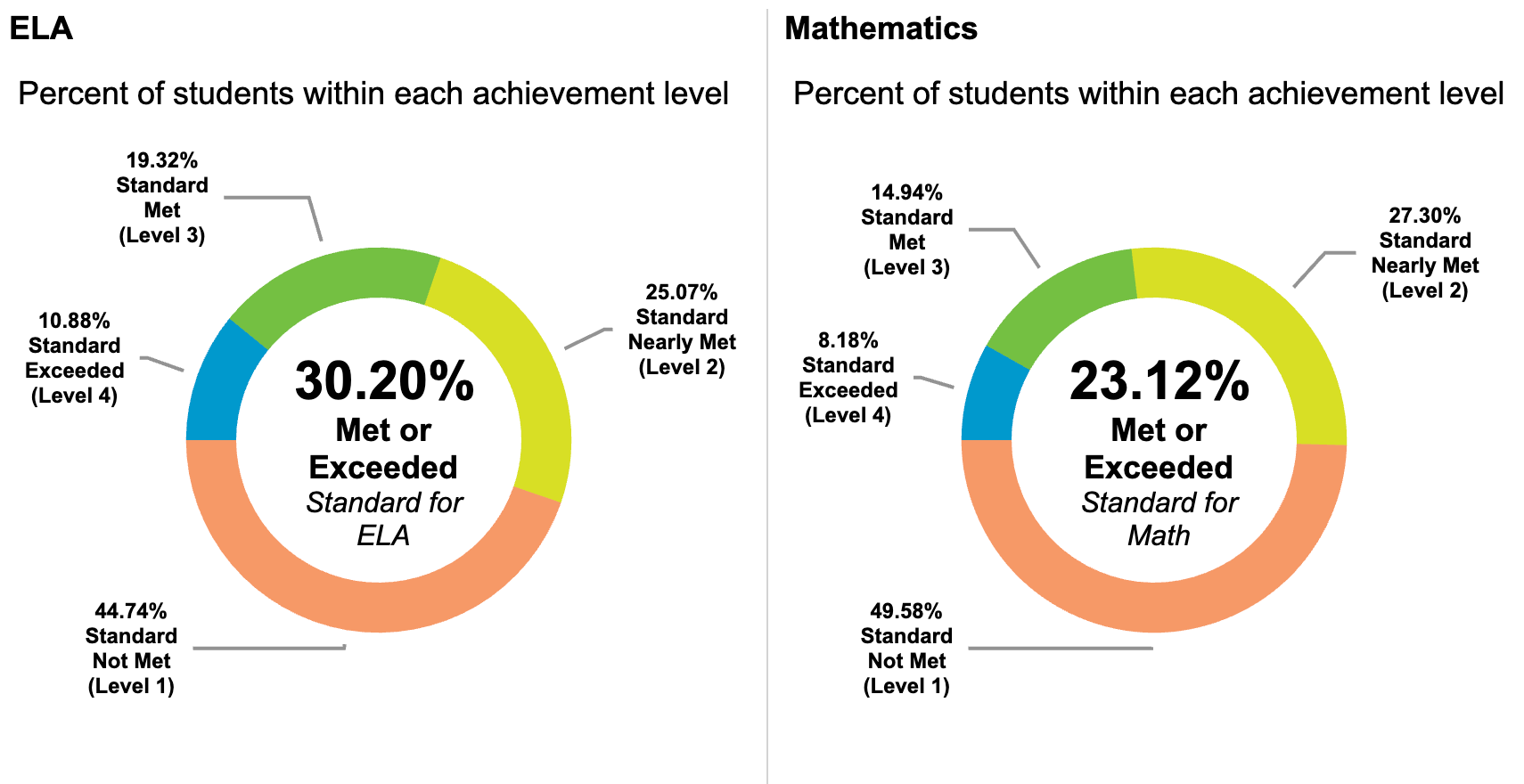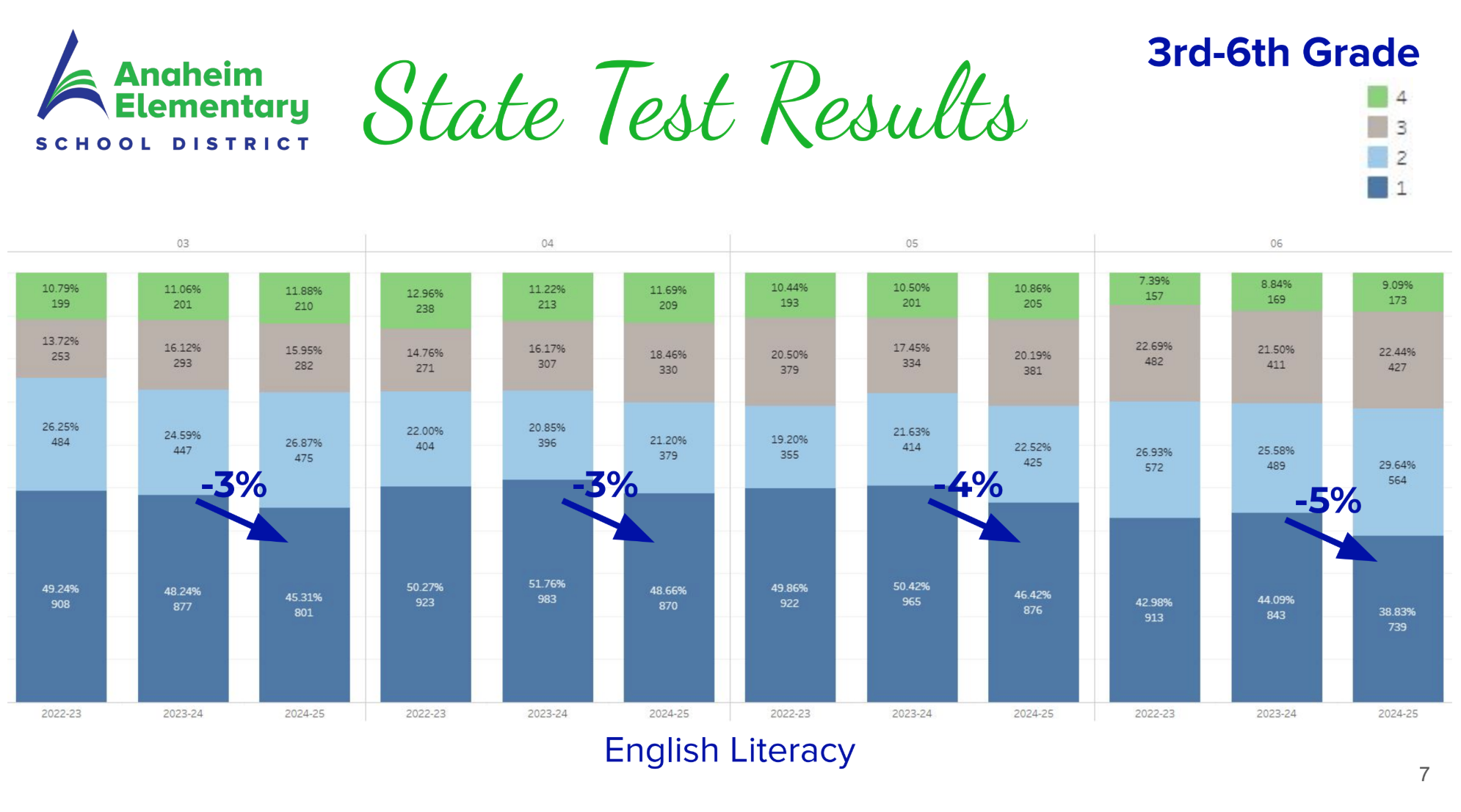Anaheim Elementary School District Reports 'Gains' in Literacy Efforts
Recently released state test results show 14 of AESD’s 23 schools improved their English language arts scores.

The Anaheim Elementary School District is reporting progress on its effort to improve literacy among its students. At the October 8 AESD Board of Education meeting, Rhonda Robertson, AESD’s Director of DATA/Special Programs, made a presentation on how district students performed on the California Assessment of Student Performance and Progress (CAASPP) tests last spring.
“Literacy is the key,” stated Robertson while she reminded the board that AESD’s focus on literacy began in the 2022-23 school year when they started a new professional development program for pre-kindergarten through third-grade teachers. The following school year, AESD expanded professional development to the fourth through sixth-grade teachers with the Aspire program. The intentional focus on literacy is seeing results, according to Robertson.
"Where we put our emphasis is where we are seeing the gains," Robertson said.
Scores released on Thursday from the California Department of Education show the percentage of AESD students that were advanced or proficient in English language arts/literacy (ELA) for 2025 was 30.19%. That’s an increase of 1.99 percentage points from 2024. For math, just 23.12% of AESD students met or exceeded grade level standards in 2025. That’s down 0.68 percentage points from 2024.


California Assessment of Student Performance and Progress (CAASPP) for the Anaheim Elementary School District shows increases in 2023-24 and 2024-25.
CAASPP is administered annually in the spring to the state's students in third through eighth grades, as well as juniors in high school. The assessments include the computer-based Smarter Balanced tests that measure “students’ knowledge and skills" in ELA, math and some grades are also assessed in science.
The results are broken down into four categories, as presented by Robertson.
- Level 1: Students do not consistently demonstrate grade-level knowledge and skills.
- Level 2: Students demonstrate foundational grade-level knowledge and skills with a limited range in complexity.
- Level 3: Students consistently demonstrate grade level knowledge with a broad range of complexity.
- Level 4: Students consistently demonstrate advanced grade level knowledge and skills with deep understanding and a full range of complexity.

Robertson dug into the data for AESD. She showed there was a 4 percentage point decline in the students at Level 1 for ELA and a 2 percentage point increase of students entering Level 3. In other words, more students were improving their ELA scores progressing toward mastery of grade-level standards. Robertson noted that the state testing is just one data point AESD uses to measure student progress as AESD assesses students every four to six weeks.
AESD’s averages remain below state and county levels. California’s overall average for 2025 scores shows 48.82% of students met or exceeded grade-level standards in ELA, while 37.30% reached the same achievement in math. That represents a 1.8 percentage point increase in each category.
Orange County’s averages are higher. For local students in the region’s 28 public school districts and charter schools, 58.89% were proficient or excelled in ELA while 49.21% met or exceeded standards in math.
According to Robertson, there were no significant districtwide changes to math scores. While in science, there was a 3 percentage point decline in Level 1, meaning an improvement in students progressing.
 Spotlight Schools
Spotlight Schools
Read more coverage of the Anaheim Elementary School District from Spotlight Schools here.
The subgroup of AESD English Learners showed a 9 percentage point increase in Level 4 ELA. Robertson highlighted that this allowed the district to reclassify 14.7% of English Learners, which is nearing the district's LCAP goal of 15% reclassification.
Robertson credited the improvements to the district’s commitment to literacy stating, “This is the first time we are sticking with it.”
Robertson reported that 87% of the AESD students come from socially disadvantaged families, also known as low income. Thirty-one percent of the students are Emergent Bilingual while 15% are students with disabilities.
Watch Robertson's presentation here.
Breaking down the data by school site, an EdSource database shows that 14 of AESD’s 23 schools made improvements to their ELA scores. While 11 of the 23 school sites made improvements in math.
Two sites that made double-digit improvements in ELA are Theodore Roosevelt Elementary (up 10.6 percentage points to 31.47% meeting or exceeding standards) and Thomas Jefferson Elementary (an increase of 10.29 percentage points to 50.2%). Both of these schools offer Asian Language Dual Immersion programs along with the Spanish Language Dual Immersion that is offered at all AESD sites. Roosevelt offers Mandarin, while Jefferson offers Korean.
Alexander Stoddard Elementary had the largest decline with 4.79% decline in ELA (33.53%).
The largest improvements in math scores were at Patrick Henry Elementary School which increased 6.46 percentage points to show 17.16% of students were meeting or exceeding grade-level standards. Loara Elementary reported the largest decline in math scores with a 5.68 percentage point drop in results to 28.73%.
AESD’s School Accountability Reports (SARC) with more site specific data are expected to be updated by December. Last year’s SARC for each school site can be found at the district's website.
The raw data can be found at the CAASPP website for the district and each individual school site or through EdSource’s searchable database.
This story was written and reported by Germaine Neumann-Chau with contributions from Jeannette Andruss.
